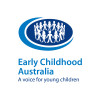Button sorting and patterning

Button sorting and patterning
Using buttons to sort and make patterns
Materials Required
- Variety of buttons- colour, size, shape
- If you don't have buttons, use small balls, marbles, counters, lego pieces, etc.
Egg carton or divided container to sort.
Play experience profile
-
Ages:
-
Min Playtime15 - 30 Minutes
-
Skills
-
Energy LevelQuiet Play
-
Messiness Rating
-
EYLF Outcomes
Play Experience Preparation
Source buttons and tray/table to sort onExperience Steps
- Gather container of buttons.
- Have a tray and start to put a few colours in each.
- Ask child how they would like to sort/make patterns.
- Role model to start if needed.
- Create different repeating patterns - have your child copy and extend the pattern.

What to talk about, or questions to ask during the experience
- What can you make?
- Can you sort these into colours/size/shape?
- Can you make something with these? e.g. snake
- How should we organise these? What patterns can you make?
- Label pattern by labelling colours (e.g. blue, red, blue, red).
Build on this...
- Use pom poms instead of buttons.
- Creating images or objects using the buttons.
- More buttons added to encourage more exploration.
- Create patterns with other objects you have in the home.
WHO guidelines for physical activity and sedentary behaviour
Provide evidence-based public health recommendations for children, adolescents and adults on physical activity.
Learn more
Provide evidence-based public health recommendations for children, adolescents and adults on physical activity. Learn more
This is a sedentary activity, however you could have a child standing at the table rather than sitting, or find some time in the day to get active!
EYLF Outcomes
The Early Years Learning Framework has been designed for use by early childhood educators working in partnership with families, children’s first and most influential educators.
View PDF
The Early Years Learning Framework has been designed for use by early childhood educators working in partnership with families, children’s first and most influential educators. View PDF
- Children begin to understand how symbols and pattern systems work
- Children express ideas and make meaning using a range of media
- Children develop a range of skills and processes such as problem solving, inquiry, experimentation, hypothesising, researching and investigating
EYLF Principle
Principle 3: High expectations and equity. Children progress well when they, their parents and educators hold high expectations for their achievement in learning.
EYLF Practice
Practice: Learning environments. Indoor and outdoor environments support all aspects of children’s learning and invite conversations between children, early childhood educators, families and the broader community. They promote opportunities for sustained shared thinking and collaborative learning.
Author:


